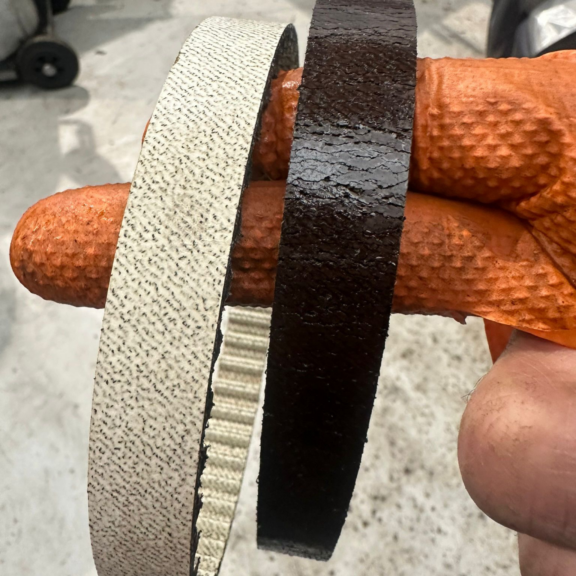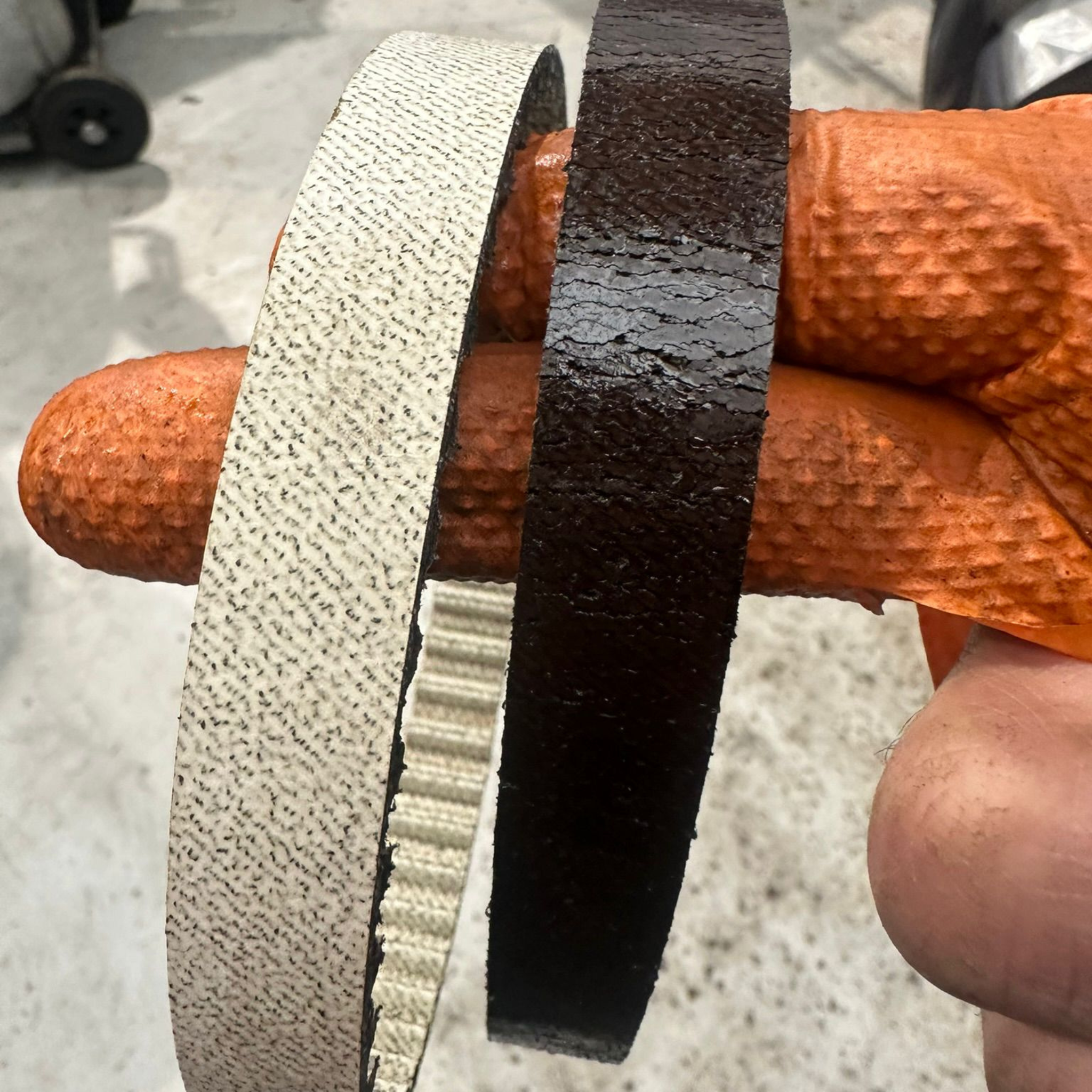

A guide to wet timing belts: how to maintain them and how to stop them damaging your vehicle
Although they’re a vital component for engines, wet timing belts often go under the radar when it comes to maintaining vehicles. But with more and more manufacturers using wet timing belts as part of their engine design, it’s important vehicle owners understand their function and what you can do to protect and prolong their lifespan.
What is a wet timing belt?
As the name suggests, a wet timing belt is a component which sits inside the engine, lubricated by an oil bath (otherwise known as an oil gallery). Although it’s occasionally made from polyurethane or neoprene, most wet timing belts are made from rubber with the structure reinforced by corded fibres and a fabric covering.
Problems with a wet timing belt system
At C R Allen and Sons, we mostly experience wet timing belt issues with Transits or motor homes often caused by improper maintenance or poor driving habits. Here’s a summary of the most common wet timing belt issues we experience in the workshop:
Impurities in components
When a wet timing belt begins to wear, particles from its outer coating and other impurities get stuck in other components such as the oil sump and pump.
Low or incorrect engine oil
Engines require the right engine oil at the recommended levels to run smoothly. If a wet timing belt is operating without a filled oil gallery, it will accelerate wear to a range of neighbouring components.
Wear, tear and damage
When a wet timing belt reaches the end of its lifespan, the closed-rubber surface will begin to fray which not only compromises the width of the belt, but also its traction on pulleys.
Reduced traction
The inside of a wet timing belt is lined with teeth to generate traction on the pulleys. If teeth start to smooth, it can cause the pulleys to slip and change the engine timing.
Other components that need to work correctly include seals, flat belts for water pumps, gaskets and oil filters. Replacing all components can cost thousands so it’s important to maintain your wet timing belt with regular servicing.
When to replace a wet timing belt
All manufacturers have different replacement intervals for wet timing belts. For example, Ford’s recommended lifespan is 144,000 miles or 120 months, whereas Vauxhall recommend every 6 years or 60,000 miles – whichever comes first.
How often you replace your wet timing belt will also depend on how you drive and how well you maintain your vehicle. If you travel short distances with lots of stopping in between, greater stress is added to your components which might accelerate wear and tear.
How to detect issues with wet timing belts
If you detect an issue with your wet timing belt, it’s important to act fast before other components get damaged. Here’s a list of issues you might experience with a failing wet timing belt:
- Engine misfires or fails to run smoothly
- Oil leaks near wet belt area
- “Check engine” warning light illuminates
- Noisy operation such as grinding and squealing
- Engine performs erratically at a high RPM
You may be able to visually check the wet timing belt, but this is dependent on make and model. Further exploration would usually require the removal of the oil sump for a closer look at the belt.
How to prevent damage to your timing belt
To protect your wet timing belt, you should avoid running your engine with low engine oil levels. You should also use the correct oil recommended by your manufacturer, which will often contain additives to prolong the life of your wet timing belt.
As well as good driving habits and regular servicing, you could also reduce your wet timing belt replacement intervals. Although manufacturers give guidance on when they should be replaced, we’ve had instances when wear and tear is present long before the suggested timeframe or mileage.
Get in touch
If you have a question about wet timing belts or want to book your vehicle in for a service, call our team on 01273 584987.